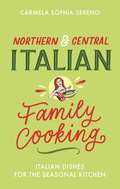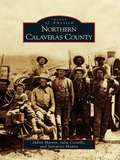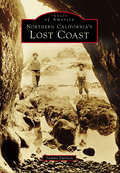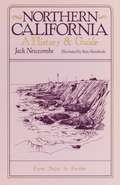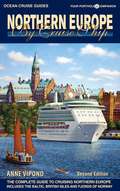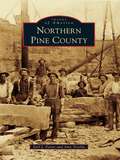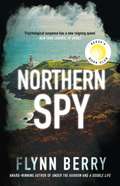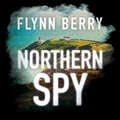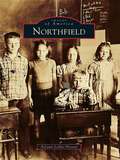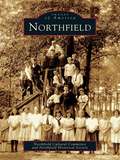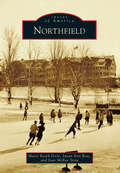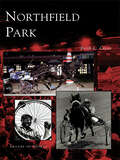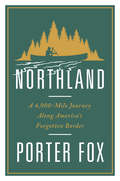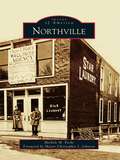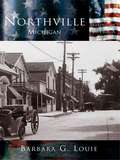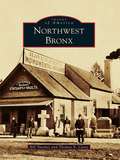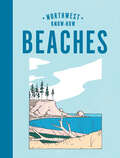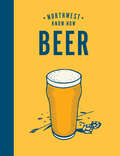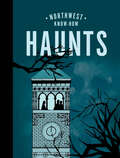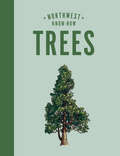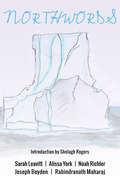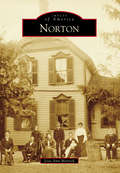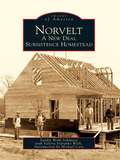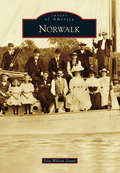- Table View
- List View
Northern & Central Italian Family Cooking: Italian Dishes for the Seasonal Kitchen
by Carmela Sophia SerenoJoin Carmela Sereno on a culinary journey from the breath-taking dolomites as far south as Lazio and Abruzzo, taking in the delicious and decadent flavour of northern and central Italy.What sets the northern and central regions of Italy apart from the cucina povera style of the south is its staple ingredients. From polenta, rice, pasta, game and seafood, to the use of butter, cream and alpine cheeses, the northern and central regions are much richer in terms of the ingredients they use. The result is an outstanding final flavour.Carmela's passion for Italian food and drink culture is at the forefront of every recipe she creates. The recipes in her latest book include: · Tomino cheese wrapped with basil and slices of speck· Veal Milanese, classic osso bucco served with a delicate, saffron-infused risotto· Cappellacci stuffed with rabbit, pork and veal· Fontina fondue· Roman oxtail stew Whether an indulgent Friday night dinner or a quick weekday meal, the recipes in this book will please the whole family.
Northern & Central Italian Family Cooking: Italian Dishes for the Seasonal Kitchen
by Carmela Sophia SerenoJoin Carmela Sereno on a culinary journey from the breath-taking dolomites as far south as Lazio and Abruzzo, taking in the delicious and decadent flavour of northern and central Italy.What sets the northern and central regions of Italy apart from the cucina povera style of the south is its staple ingredients. From polenta, rice, pasta, game and seafood, to the use of butter, cream and alpine cheeses, the northern and central regions are much richer in terms of the ingredients they use. The result is an outstanding final flavour.Carmela's passion for Italian food and drink culture is at the forefront of every recipe she creates. The recipes in her latest book include: · Tomino cheese wrapped with basil and slices of speck· Veal Milanese, classic osso bucco served with a delicate, saffron-infused risotto· Cappellacci stuffed with rabbit, pork and veal· Fontina fondue· Roman oxtail stew Whether an indulgent Friday night dinner or a quick weekday meal, the recipes in this book will please the whole family.
Northern Calaveras County
by Judith Marvin Julia Costello Salvatore MannaNorthern Calaveras County stretches eastward from the valley towns of Wallace and Jenny Lind, through the Campo Seco and Mokelumne Hill gold country, to the county seat in San Andreas and finally extends to the upcountry mining camps and logging settlements of West Point and Railroad Flat. Historically water and trails connected these diverse regions. The Mokelumne River and its tributaries--diverted into flumes and ditches--brought water to the river bars, mines, ranches, settlements, and towns and provided their lifeblood. Trails first followed Native American paths and then developed into stage roads, railroads, and state highways. These routes connected the valley to the mountains and carried pioneers seeking gold, water, timber, fertile land, and recreation to new lands and new lives.
Northern California's Lost Coast (Images of America)
by Tammy DurstonThe Lost Coast is one of the last undeveloped stretches of the California coastline, with mountains that rise thousands of feet from the sea. Located approximately 200 miles north of San Francisco, this remote area of pristine beauty is comprised of jagged cliffs, rocky shorelines, and black sand beaches. It is the only significant stretch of California without a highway. Rich in natural resources, the area was once a haven for Native Americans such as the Coast Yuki, Sinkyone, Mattole, and the Wiyot. Now it is a secluded landscape with a few isolated towns surrounded by conservation areas. The famed Lost Coast Trail begins in northern Mendocino County in the Sinkyone Wilderness and continues up into Humboldt County and the King Range National Conservation Area. During the 1800s, the Lost Coast bustled with logging settlements and mill towns. After logging wound down, those towns disappeared, and only remnants of their existence remain. From Westport north to Ferndale, this book showcases historical photographs from libraries, historical societies, and residents.
Northern California: A History and Guide - From Napa to Eureka
by Jack Newcombe Stan SkandinskiA History and Guide -- From Napa to Eureka.From the Trade Paperback edition.
Northern Europe By Cruise Ship - 2nd Edition: The Complete Guide to Cruising Northern Europe – includes Baltic, British Isles and Fjords of Norway
by Anne VipondEmbark on a voyage to some of the most famous capitals of the world with the new second edition of Northern Europe By Cruise Ship. From the British Isles to Scandinavia, Russia, the Baltic States and Germany, Northern Europe By Cruise covers the ports, shore excursions, cruise options and shopping opportunities. Also included is the history, culture and all the must see attractions of the countries of this fascinating cruise destination. Maps throughout show exactly where the ships dock and distances into town and city cores with detail on getting around on your own.
Northern Pine County
by Earl J. Foster Amy TroolinFeaturing over 210 historical photographs, Images of America: Northern Pine County guides readers on an exciting journey into the past as it explores the successes and sorrows as well as the joys and trials of the people of northern Pine County, Minnesota. Each chapter examines a unique aspect of their daily lives. Readers meet loggers and settlers from the county's earliest days, catch a glimpse of many towns and villages, and encounter a variety of industries, businesses, schools, and churches that shaped the area's economic and social landscapes. Life was not easy for the people who called northern Pine County home. On September 1, 1894, and again on October 12, 1918, forest fires devastated portions of the county, killing hundreds, destroying thousands of acres, and leaving countless residents homeless. While photographs cannot capture the heartache of fire victims, they do provide a window into northern Pine County's rich history and help tell the fascinating stories of its residents.
Northern Spy: A Reese Witherspoon's Book Club Pick
by Flynn BerryTHE INSTANT NEW YORK TIMES BESTSELLERA REESE'S BOOK CLUB PICK'You'll devour Northern Spy . . . I loved this thrill ride of a book'Reese Witherspoon'A sharp, moving thriller: you lose your breath for adrenalin'Abigail Dean, author of Girl A'An exciting thriller... A domestic noir with a difference'Adrian McKinty, author of The Chain'A chilling, gorgeously written tale'New York Times'Nerve-shredding suspense'Daily Mail'Thrillingly good... Flynn Berry shows a le Carré-like flair for making you wonder what's really going on at any given moment'Washington Post A producer at the Belfast bureau of the BBC, Tessa is at work one day when the news of another IRA raid comes on the air: as the anchor requests the public's help in locating those responsible for this latest attack - a robbery at a gas station - Tessa's sister Marian appears on the screen, pulling a black mask over her face.The police believe Marian has joined the IRA, but Tessa knows this is impossible. But when the truth of what has happened to her sister reveals itself, Tessa will be forced to choose: between her ideals and her family. Praise for Flynn Berry'Breathtaking . . . Berry writes thrillingly'New York Times'Beautifully paced and satisfyingly ominous'Guardian'Mesmerizingly effective'The Times 'A thrilling page-turner'Paula Hawkins, author of The Girl on the Train'Berry's clever, thrilling writing wound me in and left me heartbroken'Fiona Barton, author of The Widow'What a book! A skillful and compelling exploration of families, crime, and class'Clare Mackintosh, author of I Let You Go
Northern Spy: A Reese Witherspoon's Book Club Pick
by Flynn BerryTHE INSTANT NEW YORK TIMES BESTSELLER | A REESE'S BOOK CLUB PICK'You'll devour Northern Spy . . . I loved this thrill ride of a book'REESE WITHERSPOON'A chilling, gorgeously written tale... Berry is a beautiful writer with a sophisticated, nuanced understanding of this most complicated of places'NEW YORK TIMES'Thrillingly good... Flynn Berry shows a le Carré-like flair for making you wonder what's really going on at any given moment' WASHINGTON POST'An elegantly wrought story about the perils of not being what you seem... Nerve-shredding suspense'DAILY MAILA producer at the Belfast bureau of the BBC, Tessa is at work one day when the news of another IRA raid comes on the air. As the anchor requests the public's help in locating those responsible for this latest attack - a robbery at a gas station - Tessa's sister appears on the screen pulling a black mask over her face.The police believe Marian has joined the IRA, but Tessa knows this is impossible. But when the truth of what has happened to her sister reveals itself, Tessa will be forced to choose: between her ideals and her family.
Northfield
by Arlynn Leiber PresserIn 1926, railroad and electric power tycoon Samuel Insull held a contest to name a station on the Skokie Valley Electric Line that the locals already called the Skokie Swamp. The winning name? Wau Bun, a Potawatomi word meaning "dawn" and also the name of a noted Potawatomi chief from the late 1700s. But the residents of Skokie Swamp hated the name and plotted their revenge. Three years later, as Insull was on a train pulling into the station, he was horrified to discover that vandals had taken it upon themselves to rename the station Hot Bun. Insull and the locals compromised, and the more neutral moniker of Northfield was adopted. The Skokie Valley Electric Line has long since been closed, and popular legend holds that Insull died penniless and alone in Paris. But the town of Northfield has survived and thrived. Once a loose affiliation of farms, Northfield is now a quiet suburb that has enviable schools, beautiful homes, and gorgeous landscapes.
Northfield
by Northfield Historical Society Northfield Cultural CommitteeNorthfield is a vibrant South Jersey community with farm, seaport, and shipbuilding beginnings. First settled in the late 1700s, it is a place of beautiful homes built by ship captains during the 1700s and 1800s. Northfield portrays the history of the community with stunning photographs and a wealth of fascinating detail. At one time, Northfield grew food for Atlantic City hotels; its office for marriage license applications was in the insane asylum; and its glass factory sold laboratory glassware to Jonas Salk, discoverer of the polio vaccine.
Northfield (Images of America)
by Marie Booth Ferré Joan Mcrae Stoia Susan Post RossNorthfield's mountains, abundant forests, and rich agricultural fields along the Connecticut River sustained native inhabitants for centuries before the English settled in the area known as Squakheag in 1713. Incorporated in 1723, Northfield became a crossroads for travel and commerce, supporting ferries, taverns, mills, and other farm-related businesses. Elegant Federal-style homes crafted in the 1800s by the Stearns brothers still line the iconic Main Street. Northfield native Dwight L. Moody, a famous evangelist, founded area schools and summer conferences. In the late 19th century, the quiet farming town became "heaven on earth" to Moody's followers, who arrived by the hundreds each summer seeking spiritual renewal and relief from the cities. The railroad brought visitors to the first American youth hostel and to the popular Northfield Inn and Chateau, where many permanent residents found employment. Around Northfield, Queen Anne-style homes provided lodging for boarders, while tearooms, milliners, liveries, and grocers served visitors. Today, Northfield's vitality and spirit endures, forged by education, hard work, civic engagement, and perseverance.
Northfield Park (Images of Sports)
by Keith L. GisserFrom Al Capone and dog racing, to midget car and harness racing, the history of Northfield Park is one of the most colorful in the standardbred sport. A half-mile track located mid-way between Cleveland and Akron, Ohio, it has hosted the greatest drivers and horses in harness racing since its founding in 1957. From modest beginnings, the track now races 220 live race cards every year, providing a consistent racing schedule for patrons on-site and across North America via simulcast. This book details in both words and pictures the history of the storied oval known as The Flying Turns.
Northland: A 4,000 Mile Journey Along America's Forgotten Border
by Porter FoxA quest to rediscover America’s other border—the fascinating but little-known northern one. America’s northern border is the world’s longest international boundary, yet it remains obscure even to Americans. The northern border was America’s primary border for centuries—much of the early history of the United States took place there—and to the tens of millions who live and work near the line, the region even has its own name: the northland. Travel writer Porter Fox spent three years exploring 4,000 miles of the border between Maine and Washington, traveling by canoe, freighter, car, and foot. In Northland, he blends a deeply reported and beautifully written story of the region’s history with a riveting account of his travels. Setting out from the easternmost point in the mainland United States, Fox follows explorer Samuel de Champlain’s adventures across the Northeast; recounts the rise and fall of the timber, iron, and rail industries; crosses the Great Lakes on a freighter; tracks America’s fur traders through the Boundary Waters; and traces the forty-ninth parallel from Minnesota to the Pacific Ocean. Fox, who grew up the son of a boat-builder in Maine’s northland, packs his narrative with colorful characters (Captain Meriwether Lewis, railroad tycoon James J. Hill, Chief Red Cloud of the Lakota Sioux) and extraordinary landscapes (Glacier National Park, the Northwest Angle, Washington’s North Cascades). He weaves in his encounters with residents, border guards, Indian activists, and militia leaders to give a dynamic portrait of the northland today, wracked by climate change, water wars, oil booms, and border security.
Northville
by Mayor Chris Johnson Michele M. FechtMost of the first pioneers came from New York by steamship across Lake Erie, disembarking in Detroit in the 1820s. From Detroit, it would take three days of treacherous travel through dense forests, thick brush, and swampy countryside to reach their destination--a hilly region in the northwest corner of Plymouth Township that would come to be called Northville. In the nearly 200 years since the first pioneers cleared the land and established their homesteads, Northville has distinguished itself as one of southeast Michigan's most desirable communities. Its rich historical heritage and small-town charm are evident in the stately Victorian architecture of the city's vibrant downtown and tree-lined neighborhoods. Surrounded by the rolling hills of adjoining Northville Township, the community has been shaped by generations of stakeholders committed to creating and maintaining Northville's picturesque and prosperous identity. Throughout its storied history, Northville has been home to the world's largest manufacturer of school furniture, the site of aviation pioneer Eddie Stinson's aircraft company, and the location for one of automotive legend Henry Ford's first village industries, the Northville Valve Plant.
Northville, Michigan
by Barbara G. LouieLocated only a short distance from the cacophony and activity of Detroit's metro area, Northville has maintained its unique small-town charm and identity across the passing decades. Even before the town's official incorporation in 1955, Northville's citizens worked tirelessly to preserve their picturesque setting in rural western Wayne County, to maintain the elegant Victorian architecture in their homes and businesses, and to carve out a prosperous community, marked by excellent schools and a high quality of life. Northville, Michigan brings to life, through word and image, the different events and eras that shaped this small town's history and recalls the area's notable personalities and influences, such as auto industry legend Henry Ford, aviation pioneer Eddie Stinson, and Wayne County Road Commissioner Edward Hines, and their impact on the general character of the community. Most importantly, this volume highlights the everyday person's existence in the Northville of yesteryear, providing today's readers a rare opportunity to glimpse into the lives and worlds of their ancestors and to experience firsthand how they worked, how they worshiped, and how they played.
Northwest Bronx (Images of America)
by Bill Twomey Thomas X. CaseyNorthwest Bronx is home to Wave Hill, Van Cortlandt Park, Woodlawn Cemetery, the New York Botanical Garden, and a variety of colleges and universities. Hunter College served as a training facility during World War II, and Mark Twain, Theodore Roosevelt's family, and Arturo Toscanini once lived at Wave Hill. Pres. John F. Kennedy's boyhood home is only steps from Wave Hill, and George Washington slept at the Van Cortlandt Mansion. Northwest Bronx features an array of vintage photographs of the borough's neighborhoods, from Spuyten Duyvil, Kingsbridge, Riverdale, and Woodlawn to the neighborhoods north of Fordham Road and west of the Bronx River.
Northwest Know-How: Beaches
by Rena PriestEntertaining, educational and highly giftable, Northwest Know-How: Beaches showcases the majestic, quirky, and unique beaches of the Washington and Oregon coastline through facts, history, legend, and lovely illustrations.There are few things more treasured in the Pacific Northwest than its beaches. This celebratory guide features more than 30 favorite coastal and island beaches in Washington and Oregon, providing tips for visiting, fun facts, natural history, and native lore. Charming illustrations will capture the roar of the surf, the call of the wildlife, and the beauty of our beaches. Sure to delight the avid beachcomber and curious visitor alike, this makes the perfect gift and guide for PNW beach-lovers and nature enthusiasts.
Northwest Know-How: Beer
by Jacob UittiNorthwest Know-How: Beer is your crash course on all that is malty and hoppy in the Pacific Northwest. From the brewing basics and local lore to resident brewers and their standout drafts, explore the world of PNW craft beer with this engaging guide.Craft beer is a nationwide movement, and in the upper left corner of the country you will find some of the most passionate and dedicated producers around. Northwest Know-How: Beer is an ode to the region's brews, equipping readers with interesting facts, brewery origin stories, and resources for connecting with other beer enthusiasts. For the uninitiated, this will be a great primer for getting to know the area, and for aficionados it will be a delight to see callouts to local classics and hot spots on the rise!
Northwest Know-How: Haunts
by Bess LovejoyEntertaining, educational and highly giftable, Northwest Know-How: Haunts showcases the haunted hotspots, cemeteries and graveyards, ghost towns, and curiosities in Oregon and Washington.True crime and the supernatural are more popular than ever and Northwest Know-How: Haunts explores the ghosts, legends, and haunted spots of the Pacific Northwest. From the many haunted spots of Seattle&’s Pioneer Square and Pike Place Market to Oregon&’s many haunted hotels, lighthouses, and theaters, this book uncovers the events that inspired the hauntings as well as the reports of the hauntings themselves. Read about the ghost of Simon Benson, a teetotaling spirit who has been known to knock over drinks at his namesake Benson Hotel in Portland. And discover why it might be prudent to steer clear of the honeymoon suite at the Columbia Gorge Hotel. Spectral sightings extend to the water as well: a ghost ship appears off Seattle&’s Pier 70…and reputedly foretells doom. Haunts will be a must-have for anyone who likes their history with a side of spooky.
Northwest Know-How: Trees
by Karen Gaudette BrewerAn entertaining and educational guide, Northwest Know-How: Trees introduces 54 of the Pacific Northwest's most engaging and impressive varieties, providing key identification features, statistics, facts, and beautiful line-art renderings of the awe-inspiring sentinels that dot our landscapeTrees in the Pacific Northwest are as varied as they are majestic. This celebratory guide features 54 of the most intriguing varieties in the region, providing identification tips, statistics, and fun facts for each. In addition, each profile will be paired with beautiful illustrations showing the full silhouette along with finer details such as a flower or leaf. Delighting both the curious observer and experienced arborist alike, this collection makes a perfect gift for the tree lover in your life.
Northwords (Northwords)
by Alissa York Noah Richler Rabindranath Maharaj Joseph Boyden Sarah LeavittNorthwords is a cross-platform project that takes urban Canadian writers Joseph Boyden, Sarah Leavitt, Rabindranth Maharaj, Noah Richler, and Alissa York to some of the world’s most extreme environments, to join the conversation about the north. Introduced by award-winning journalist and radio personality Shelagh Rogers, Northwords is a collection of stories written by acclaimed Canadian authors as they experienced one of Canada’s most awe-inspiring northern national parks Torngat Mountains National Park, the country’s newest national park, and a place steeped in geological and human history. The cross-platform project, which includes a documentary film that follows the authors as they explored the harsh and stunning terrain, had adventures, and created these new works, adds to the continuing story of the North. The stories explore the idea of the North, and what happens when the country’s best writers tackle its most overwhelmingly beautiful places. Taking advantage of opportunities presented by transmedia integration, users can experience the stories in the writers’ own words through Anansi Digital, as well as learn more about their processes and what inspired them through interactive content. Users will have access to film and audio content, and together, these related media will create a larger story web, allowing the audience to truly immerse themselves in the sights, sounds, and stories of the North.
Norton
by Lisa Ann MerrickNorton Township was named for proprietor and principal landowner Birdsey Norton, a wealthy merchant from Goshen, Connecticut. However, he never set foot in Norton--he died six years before the township was organized in 1818. Early settlers, the first of whom were James Robinson and John Cahow, carved their way through the wilderness to build on this fertile land. In its early form, Norton included seven small hamlets: Loyal Oak, Western Star, Sherman, Johnson's Corners, Norton Center, Hametown, and New Portage. Each hamlet had its own unique shops, taverns, blacksmiths, and mills. These communities were home to familiar local names like Seiberling, VanHyning, Harris, Miller, Oplinger, and Breitenstine. By 1961, Norton had become recognized as a village, and by 1968 its growth warranted the designation of city. Early businesses, local schools and churches, aerial views, accidents, and intrigue can all be found within the pages of Images of America: Norton.
Norvelt: A New Deal Subsistence Homestead
by Sandra Wolk Schimizzi Michael Cary Valeria Sofranko WolkIn 1933, the town of Norvelt became the fourth of 99 planned subsistence homestead communities subsidized by the federal government as part of the National Industrial Recovery Act for dislocated miners and industrial workers. The American Field Service Committee was recruited to implement and build the subsistence project and established a work camp in the summer of 1934. More than 1,850 people applied for 250 lots, and the first 1,200 homesteaders helped build their own homes on a lease-to-purchase agreement. Homes were equipped with a grape arbor, 3.4 acres of land, and chicken coops. Cooperatively, homesteaders established community garden plots and raised livestock, hogs, and chickens. A format of cultural, political, and religious expression was provided to the residents, and through vintage photographs Norvelt: A New Deal Subsistence Homestead celebrates the remarkable life transformation the homesteaders were able to experience during the town's formative years.
Norwalk (Images of America)
by Lisa Wilson GrantLocated on the shores of Long Island Sound, Norwalk's close proximity to New York City prompted the building of many summer residences and guest cottages along its coast. In the summer, steamships and trolleys arrived with passengers looking to enjoy the local amusement park, Roton Point. Norwalk's earliest industries included farming as well as mills powered by its rivers. The area has been famous for its pottery, oystering, and hat manufacturing. Over time, this community has endured disasters; it was burned during the American Revolution, and the flood of 1955 wiped out much of the Wall Street area as well as several bridges on the Norwalk River. Norwalk shares vintage images from the mid-1800s through the 1960s, highlighting memorable sites such as Old MacDonald's Farm and the Melton Automobile Museum. The revitalization of Norwalk's downtown areas proves it is possible to respect the past and those that came before through the renewal of historical architecture.
